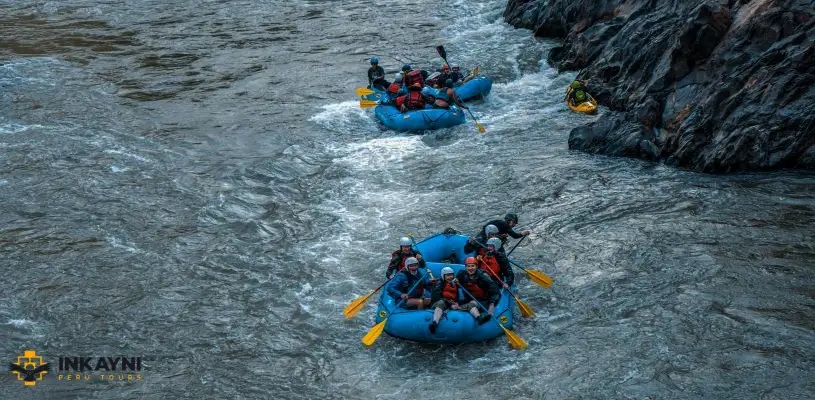Machu Picchu rain doesn’t change the destination, it changes the preparation. If you travel during wet months, you’ll encounter variable skies, wet ground, and fewer crowds than in the dry season. The altitude is moderate in the visiting area, but it’s still advisable to arrive calmly and with basic waterproof equipment. Does it rain in Machu Picchu all day or are they intermittent showers? How does visibility affect your photos and the pace of your visit?
Today there are timed reservations, defined circuits, and controls that are enforced even when it rains, so plan your access times and time margins. Costs can fluctuate according to season and demand, and the weather conditions simple decisions like what footwear to use or what time to enter. What to bring, what to book first, and how to adjust the plan if you wake up to dense fog? Read this complete guide and avoid surprises.
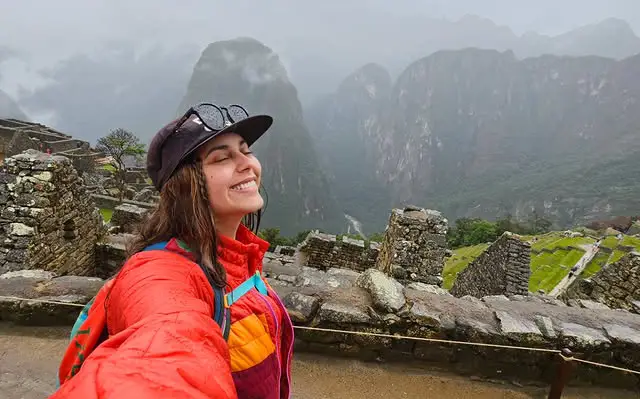
Happy face in suspended time. Source: Cherish Green.
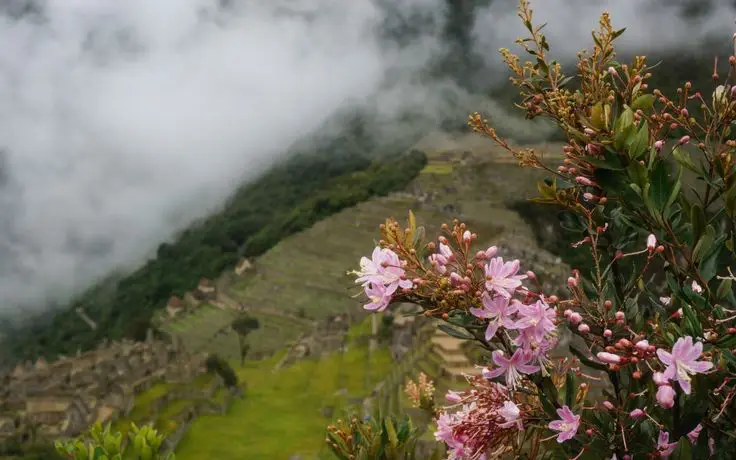
Subtle aroma of a lost world. Source: Thrifty Nomads.
When is the rainy season and how does it affect your visit?
The rainy season at Machu Picchu extends from November to March, reaching its most intense point in January and February. During this last month, even the Classic Inca Trail remains closed for maintenance, although the citadel stays open to the public. It’s a vibrant time when the earth breathes with every drop and the rivers recover their strength. However, it also requires some additional preparation, both in logistics and equipment.
Remember this:
Traveling to Machu Picchu in the rain sometimes means adjusting schedules, gear, and visiting times, but it doesn’t mean canceling the trip.
Mornings tend to be more stable and allow you to explore the site calmly, while afternoons commonly bring sudden downpours that appear without warning, transforming the landscape in a matter of minutes.
During the day, the weather is mild, but when night falls the temperature drops and a light jacket becomes indispensable. During this season, delays may also occur: trains adjust schedules as a precaution and some sections, especially on the hydroelectric route, become more demanding due to mud and humidity.
Quick facts about rainy season at Machu Picchu
- During the rainy season (November to March), rain in Machu Picchu is frequent but not constant: many rains concentrate in the afternoon, while mornings can offer clarity.
- Temperatures range between approximately 12°C at night and up to 22-24°C during peak hours.
- February accumulates the highest monthly rainfall, and it’s the month when the Classic Inca Trail closes for maintenance and risk.
- Trains operate year-round, but during intense rains they may experience delays or rescheduling, and some departures from Cusco (Wanchaq or Poroy) are interrupted and replaced with bimodal routes (bus + train).
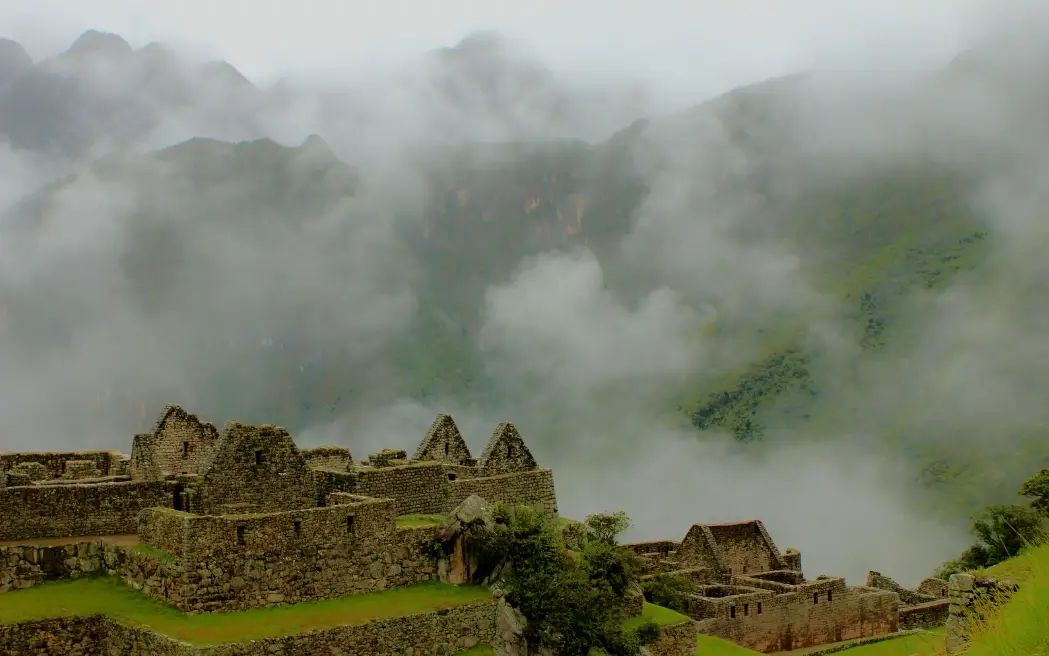
Ethereal mist. Source: Carlos Ivovich.

Colors in rain. Source: Bernie.
Weather at Machu Picchu
- Altitude: Machu Picchu sits at approximately 2,430 m above sea level, which moderates the climate and produces mild days and cold nights.
- Precipitation: the rainiest months are January, February, and March; the driest month is usually July.
- Average temperatures: throughout the year they vary between about 8°C in the coldest early mornings and close to 22°C on warm days.
Machu Picchu doesn’t have well-defined seasons like “summer” or “winter”: its seasons respond rather to the presence or absence of rain.
- The dry season, from April to October, is the most popular. During those months, clear skies, sunny days, and wide visibility prevail. July and August are the busiest, and nights can be quite cold: temperatures could drop to about 5°C or even a bit lower. During the day, the sun can warm up to nearly 20°C, allowing comfortable exploration.
- The rainy season, from November to March, brings intensely green landscapes, humidity, and frequent precipitation, especially in the afternoons. Mornings tend to be more stable. During this period, temperatures range between 12°C (or slightly less) at night and about 21-22°C during the day, with variations according to the month.
Those who visit Machu Picchu rain discover a more humid, foggy environment full of living vegetation. On the other hand, each month has its character:
- December to March: frequent and intense rains, muddy paths.
- April to November: relatively drier and more stable weather, ideal for visiting.
- June and July: clear skies, optimal weather for views, but very cold nights.
This dual climate, half humid, half dry, is an essential part of Machu Picchu’s magic: visiting it in the dry season provides comfort and good skies, but doing so during rains reveals lush landscapes and unique atmospheres.
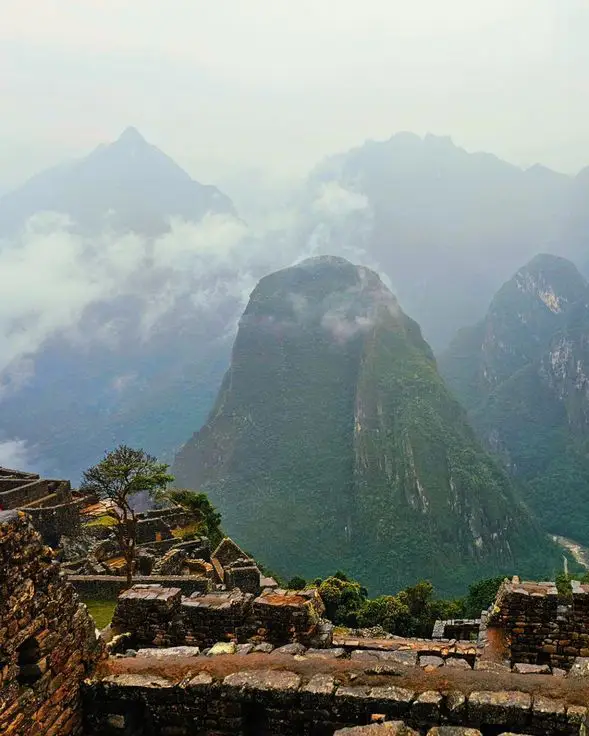
Dreamlike landscape. Source: Cherish Green.
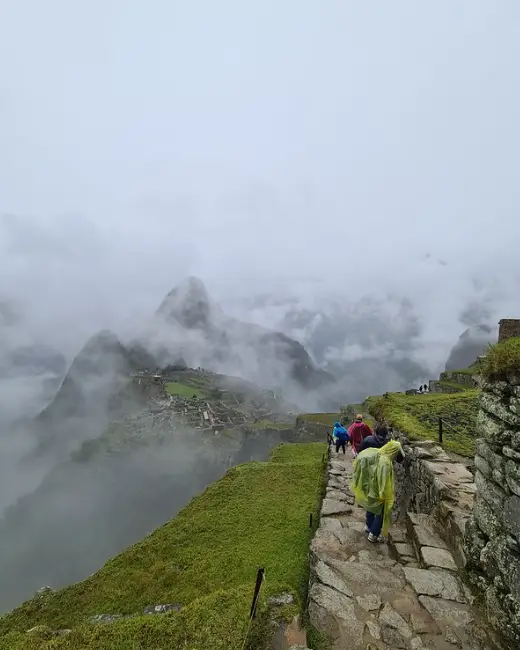
Elusive summit, faith in steps. Source: Picchu Travel.
Advantages of the rainy season
- Fewer tourists, the paths are emptier and the citadel breathes peacefully.
- Machu Picchu rain allows unique photographs with low clouds, reflections on stone, and more saturated colors.
- The landscape explodes in green, the mountains seem covered in velvet.
- Dancing mist, the Inca city appears and disappears like a whisper.
- Lower prices, tours, trains, and accommodations often offer reduced rates.
Disadvantages of the rainy season
- Intense rains: downpours can be prolonged and unpredictable.
- Slippery trails: especially at Huayna Picchu or Machu Picchu Mountain.
- Dense fog: sometimes visibility is reduced to meters.
- Possible delays: trains, planes, and ground transportation may experience delays or cancellations.
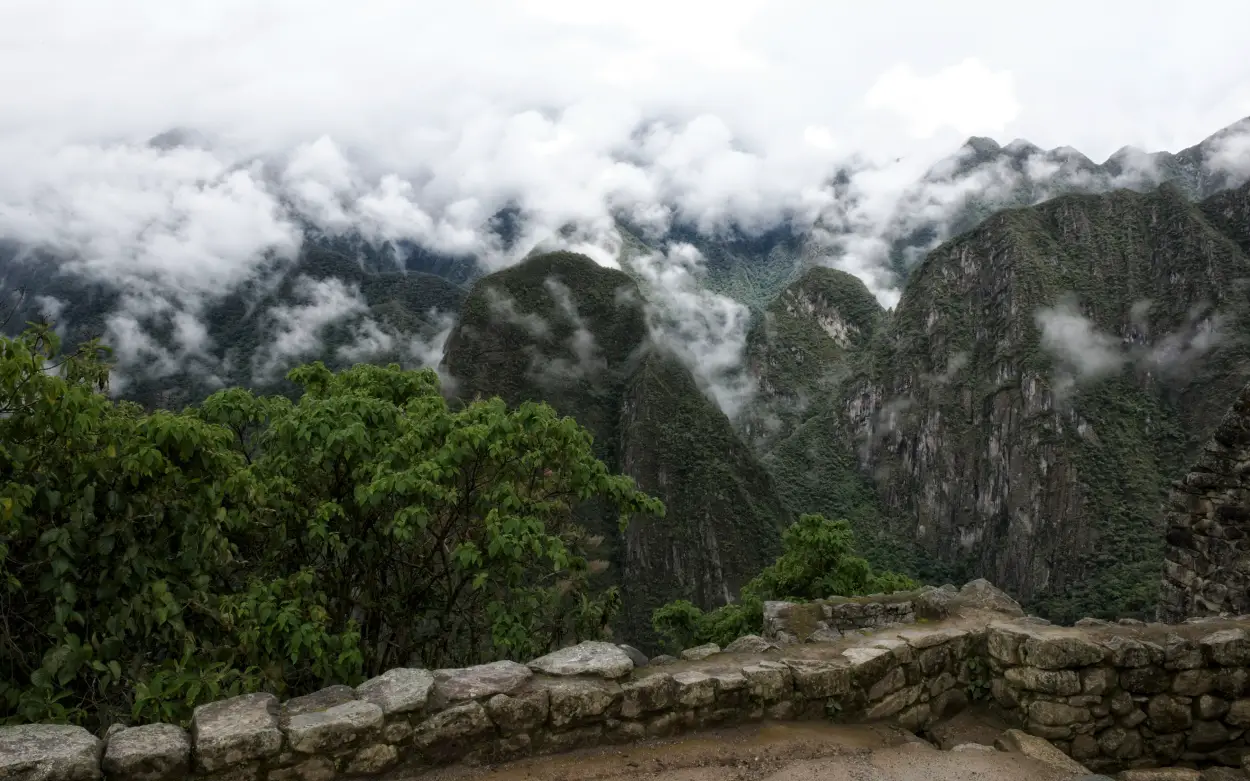
Above Andean peaks. Source: Andrea Di Castro.
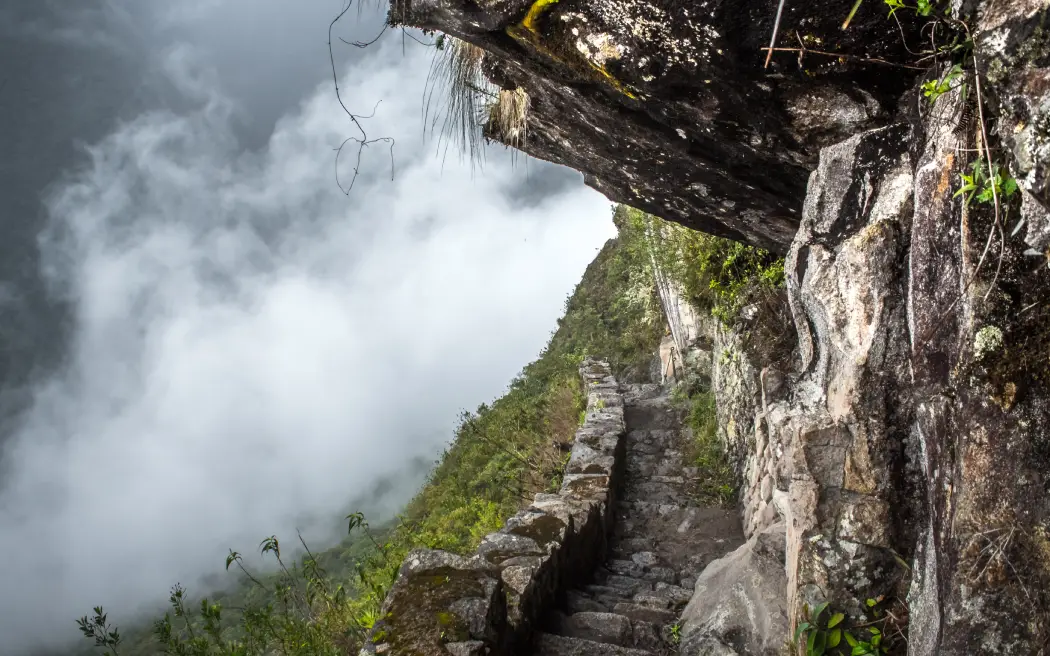
Making peace with the precipice. Source: Matías Quiroga.
What to bring to be prepared?
- Poncho or waterproof jacket.
- Non-slip, resistant, and comfortable footwear.
- Waterproof case for your camera or cell phone.
- Extra change of dry clothes, and hermetic bags to protect your documents.
- Waterproof cover for your backpack will save you if the rain intensifies without warning.
- Energy snacks: nuts, cereal bars, dark chocolate.
- Reusable water bottle.
- Small quick-dry towel.
Important note:
It’s recommended to plan your visit to the citadel early, when the weather tends to be more stable.
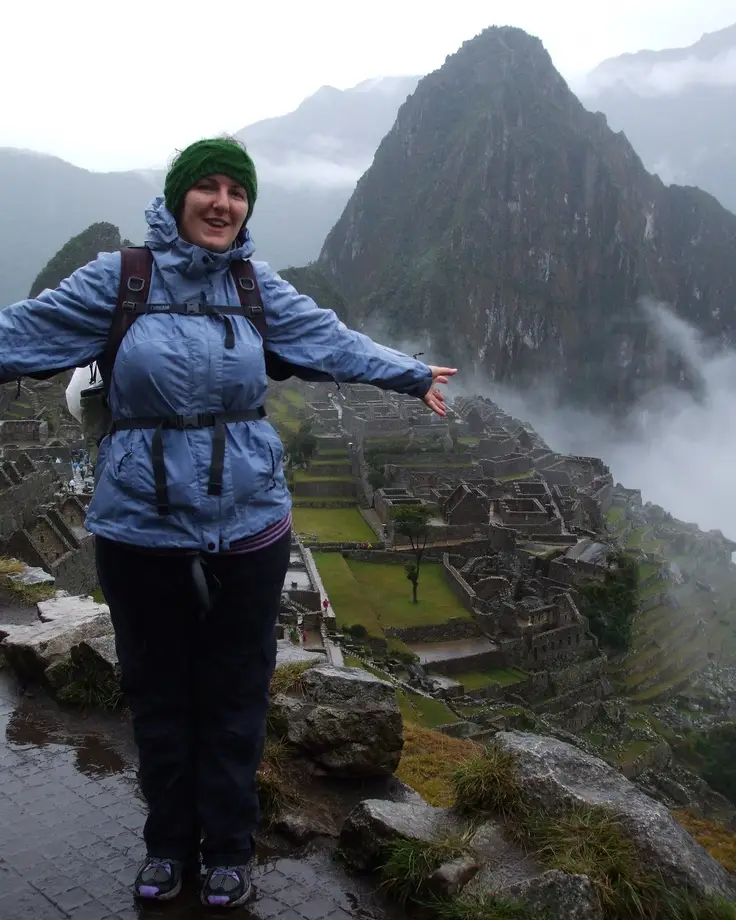
Embracing laughter. Source: Katie Joll.
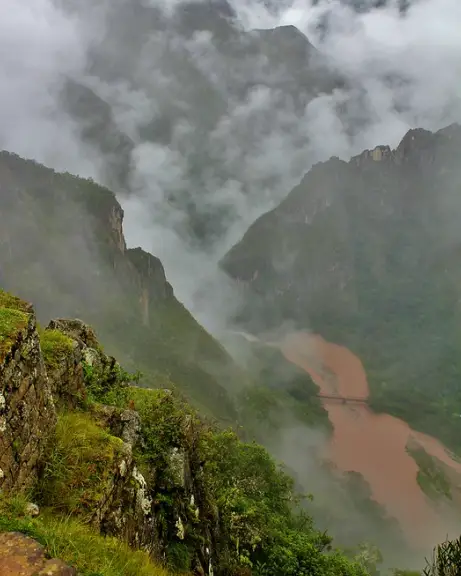
Dance over reddish riverbed. Source: Carlos Ivovich.
Railway access and operational adjustments during rains
During the rainy season, the companies PeruRail and Inca Rail implement bimodal service, which combines bus and train to connect Cusco with Ollantaytambo and Aguas Calientes. This system operates mainly from January to April, when the railway section between Cusco and Ollantaytambo may be affected by maintenance or landslide risk.
In the case of PeruRail, most departures from Wanchaq station are made by bus to Ollantaytambo, where the journey continues by train to Machu Picchu Pueblo. Inca Rail offers a similar service, with buses departing from its terminal on Av. El Sol, also connecting at Ollantaytambo.
Those traveling independently can opt to go directly to Ollantaytambo and board the train there. The Ollantaytambo – Aguas Calientes section operates year-round, although on days with intense rains there may be specific delays or rescheduling. Therefore, it’s advisable to verify schedules and service status before leaving Cusco, especially in January and February.
What to do if it rains all day?
There are days when dawn brings dense fog that refuses to lift, and the sky, gray and generous, decides to empty itself without pause. But even then, the journey doesn’t stop:
Hot springs of Aguas Calientes
While the sky weeps, you can immerse yourself in steaming pools that spring from the mountain. The thermal baths of Aguas Calientes not only relax your body after a hike: they also invite you to contemplate the rain as a spectacle. The steam, the stone, the rain, and your rest form an unforgettable scene. These hot springs have several pools of different temperatures and are open year-round, from 5 a.m. to 8 p.m. Entry costs around 20 soles for foreigners, 10 soles for nationals, and 5 soles for local residents. They’re located a few minutes’ walk from the town center, following Hermanos Ayar Avenue.
Manuel Chávez Ballón Museum
A less crowded but deeply revealing place. Under a roof and surrounded by history, this museum allows you to discover why Machu Picchu exists, who inhabited it, and how it was built. The “Manuel Chávez Ballón” Site Museum is located near the Ruinas bridge, on the way to the Inca citadel. It opens daily from 9 a.m. to 4 p.m. You can reach it by walking about 30 minutes from Aguas Calientes or in a short bus or taxi ride if you prefer to avoid the rain.
Local cafés and restaurants
Rain is the perfect excuse to let yourself be enveloped by the aroma of good high-altitude coffee, grown in nearby valleys. Aguas Calientes and the Sacred Valley are full of cozy cafés, artisanal bakeries, and restaurants where a creole soup or freshly prepared trout tastes better if the world outside is soaked. Some establishments have covered balconies from which you can watch the storm pass with a warm cup between your hands.
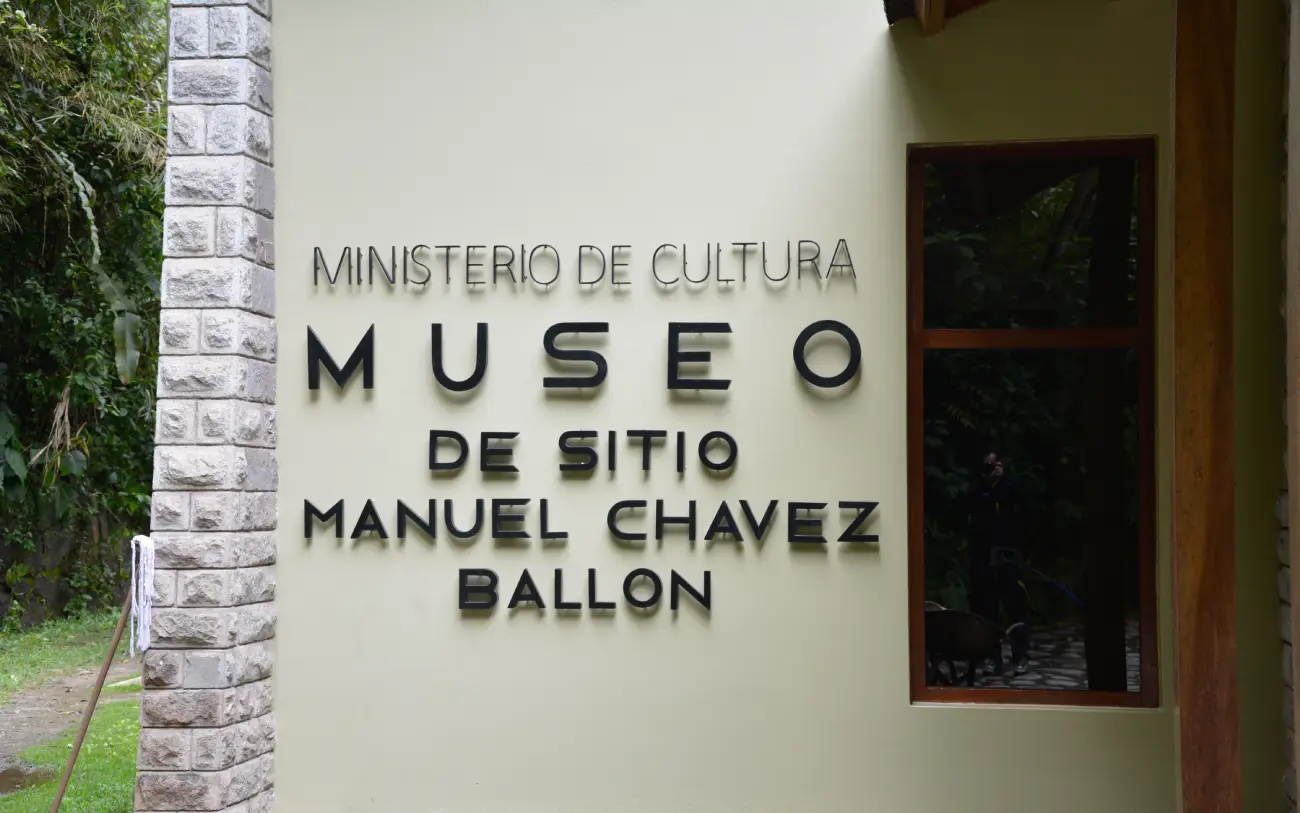
Window to the secret. Source: Gaël Beure.
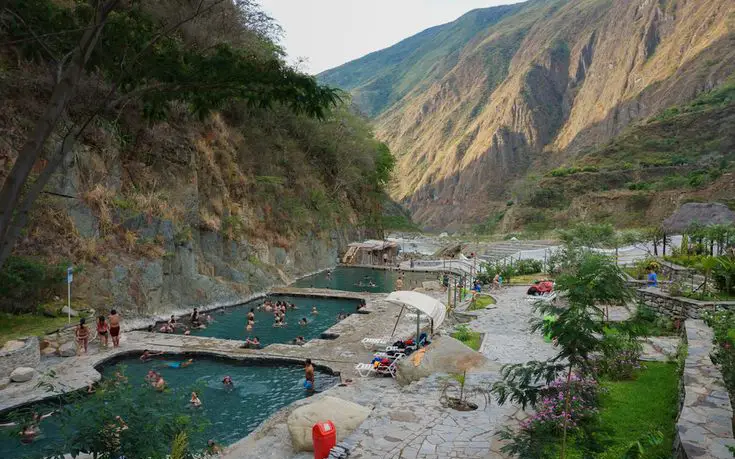
Steam on rock walls. Source: Ditch The Map.
Machu Picchu rain reveals the beauty
At Inkayni Peru Tours we know that witnessing Machu Picchu with rain is looking beyond the perfect postcard. It’s choosing the less traveled path, walking it through the mist and listening to it while the rain caresses the stones.
Not everyone seeks this experience, but those who live it remember it with a different tenderness. Because Machu Picchu is an encounter, and under the rain, that encounter feels more genuine, true, personal.
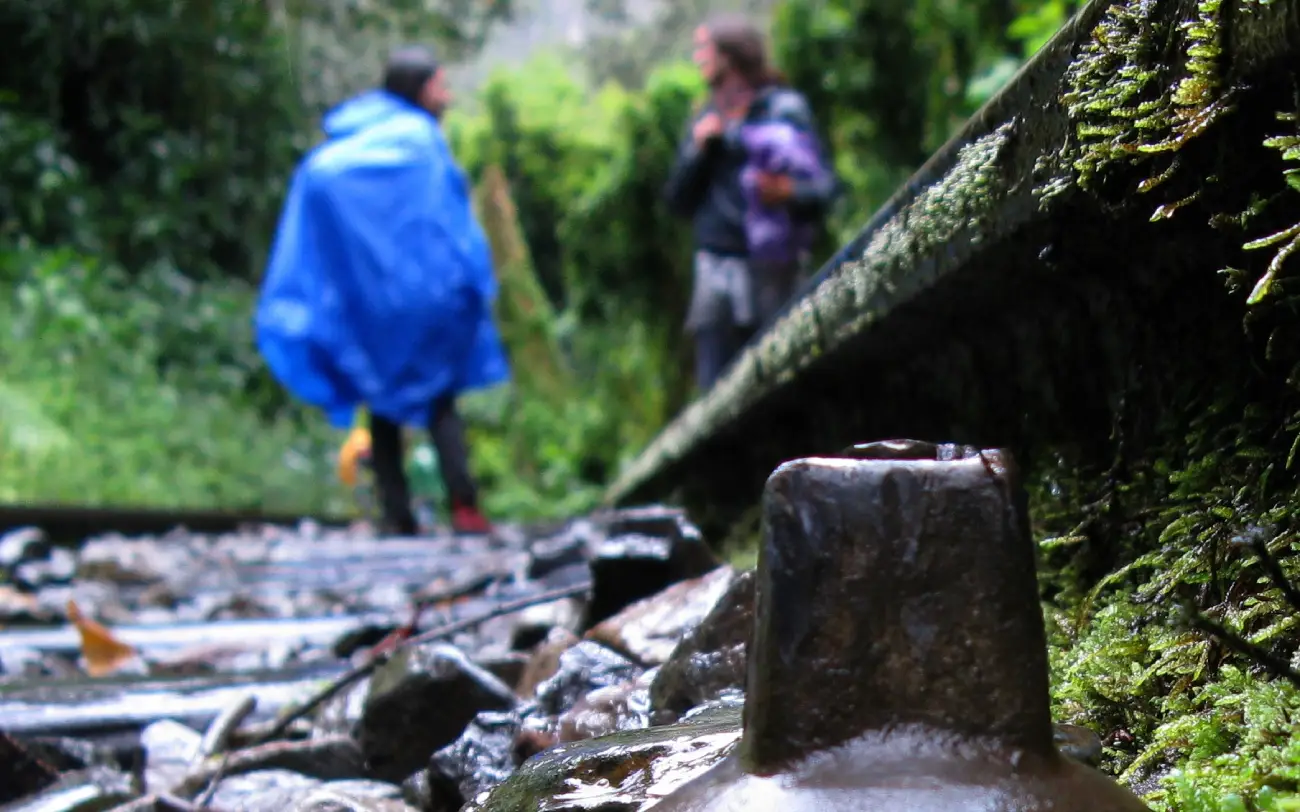
Awakened jungle. Source: Danilo Urbina.
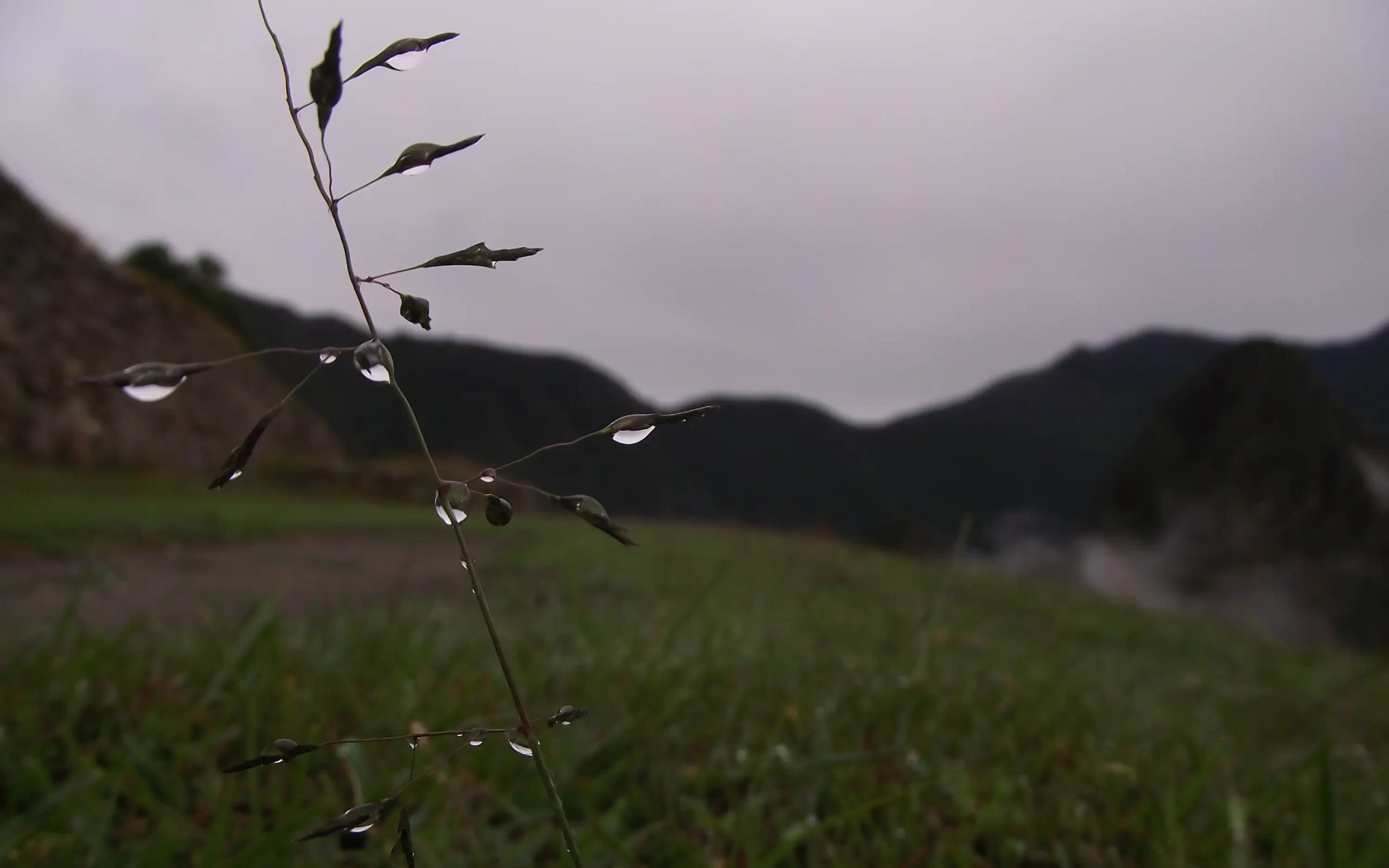
Caress of sleeping sky. Source: Rodrigo Sepúlveda.
Frequently asked questions
Is Machu Picchu open during the rainy season?
Yes, Machu Picchu remains open year-round, including the rainy season, except for exceptional cases due to natural events or demonstrations that block access. The main citadel and official circuits operate normally, although some complementary routes or special sections may be temporarily closed during critical periods.
The Classic Inca Trail route, for example, closes every year in February for maintenance.
Is it safe to hike in the rain?
Yes, as long as you’re well prepared. During the rainy season, trails can become slippery, so it’s essential to wear non-slip footwear, waterproof clothing, and walking sticks if you use them.
Authorities may restrict access to areas like Huayna Picchu or Machu Picchu Mountain during intense rains for safety reasons.
Do trains operate if it rains?
Generally yes. PeruRail and IncaRail companies maintain operations during the rainy season, although during periods of heavy rain, landslides, or river flooding, there may be delays, cancellations, or service modifications.
During January-April, for example, bimodal services are activated (combining bus + train) when the tracks between Cusco and Ollantaytambo are affected.
Can you see the sunrise?
It depends. During the rainy season, fog and clouds are more frequent, which can hide the sunrise or make it very faint.
But that cloud cover also creates special atmospheres: seeing the citadel emerge through clouds can be more emotional than a completely clear sky.
Are there guided tours year-round?
Yes, you can book guided tours in any month of the year. Local guides are prepared to provide tours even under light rain, adapting the circuits according to weather conditions and traveler preferences.




